Pratik Kumar
High-Frequency Tunable Grounded & Floating Incremental-Decremental Meminductor Emulator and Application
May 16, 2022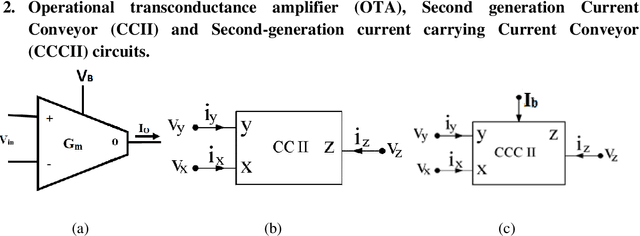

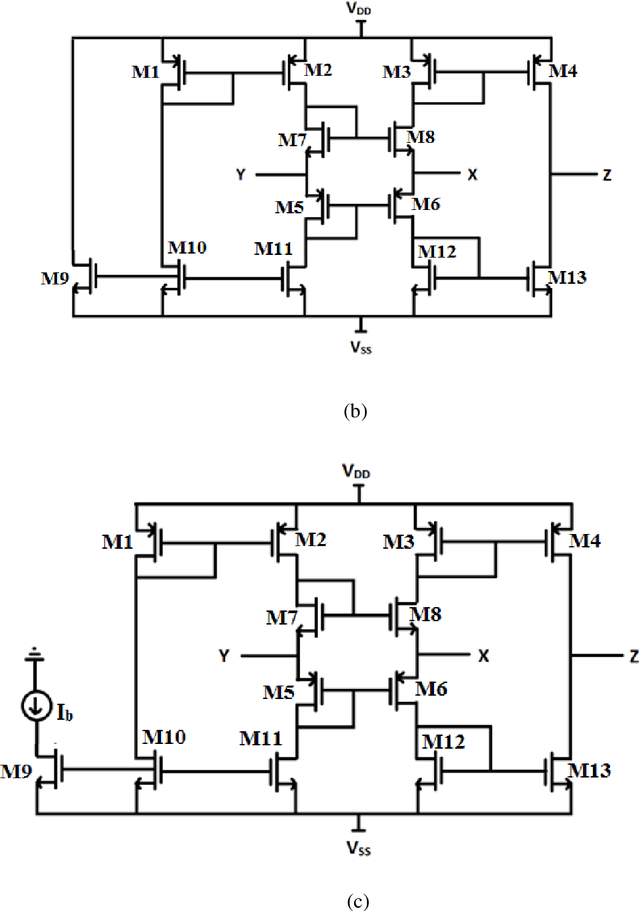
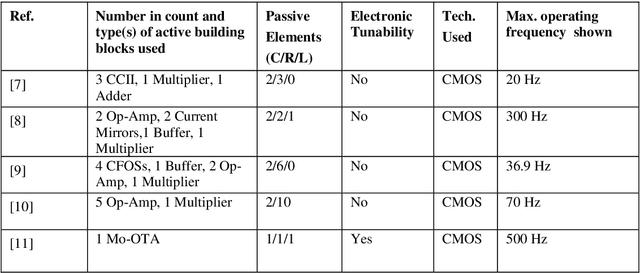
Abstract:In this paper, a new design has been proposed for the realization of grounded and floating meminductor emulators built with two OTAs and two second-generation current conveyors. The proposed emulators can be configured in both incremental and decremental topology. This paper also proposes the application of meminductor as Amplitude Modulator (AM). The proposed circuits and its application claim that the circuit is much simpler in design and can be utilized in both topologies. The performance of all the proposed circuits has been verified with Cadence Virtuoso Spectre using standard CMOS 180nm. Furthermore, post-layout simulations and its comparison along with non-ideal and Monte Carlo analysis have been carried out in detail.
High-Frequency Tunable Resistorless Memcapacitor Emulator and Application
May 13, 2022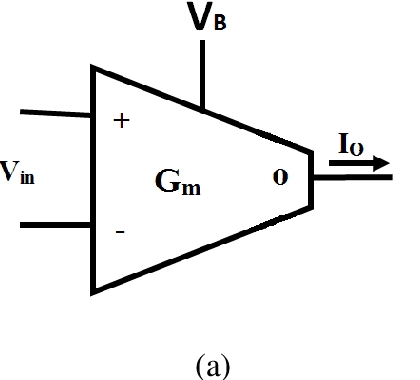
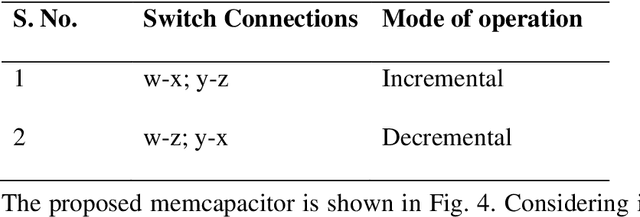
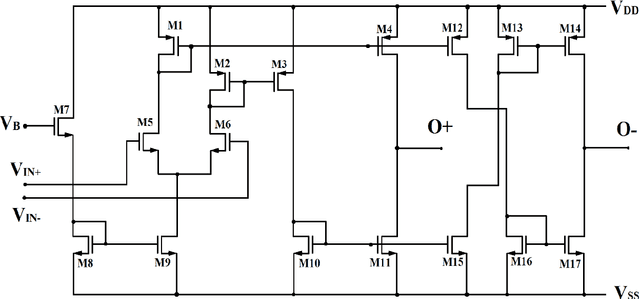
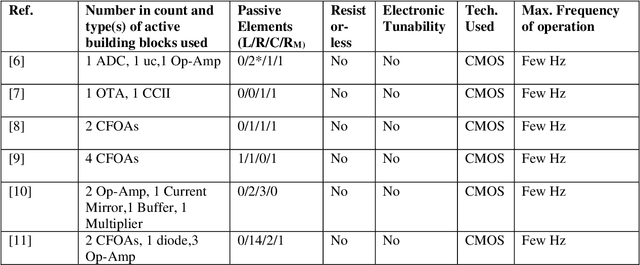
Abstract:In this paper, a new design has been proposed for the realization of high-frequency memcapacitor emulators built with three OTAs. This paper also proposes the application of memcapacitor as an amplitude modulator. Furthermore, applications of memcapacitor as a filter, Oscillator point attractor, and periodic doubler are also shown. The proposed circuits can be configured in both incremental and decremental topology. The proposed circuits and their application claim that the circuit is much simpler in design and can be utilized in both topologies. The performance of all the proposed circuits has been verified on Cadence Virtuoso Spectre using standard CMOS 180nm. Furthermore, post-layout simulations and their comparison have been carried out.
Theory and Implementation of Process and Temperature Scalable Shape-based CMOS Analog Circuits
May 11, 2022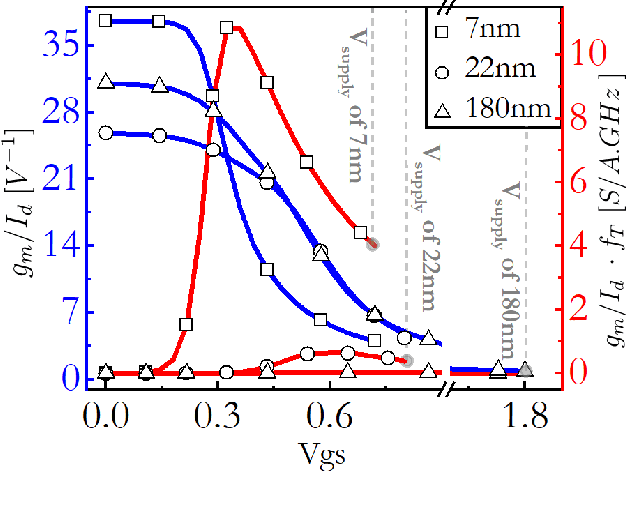



Abstract:Analog computing is attractive to its digital counterparts due to its potential for achieving high compute density and energy efficiency. However, the device-to-device variability and challenges in porting existing designs to advance process nodes have posed a major hindrance in harnessing the full potential of analog computations for Machine Learning (ML) applications. This work proposes a novel analog computing framework for designing an analog ML processor similar to that of a digital design - where the designs can be scaled and ported to advanced process nodes without architectural changes. At the core of our work lies shape-based analog computing (S-AC). It utilizes device primitives to yield a robust proto-function through which other non-linear shapes can be derived. S-AC paradigm also allows the user to trade off computational precision with silicon circuit area and power. Thus allowing users to build a truly power-efficient and scalable analog architecture where the same synthesized analog circuit can operate across different biasing regimes of transistors and simultaneously scale across process nodes. As a proof of concept, we show the implementation of commonly used mathematical functions for carrying standard ML tasks in both planar CMOS 180nm and FinFET 7nm process nodes. The synthesized Shape-based ML architecture has been demonstrated for its classification accuracy on standard data sets at different process nodes.
Investigating Bias In Automatic Toxic Comment Detection: An Empirical Study
Aug 14, 2021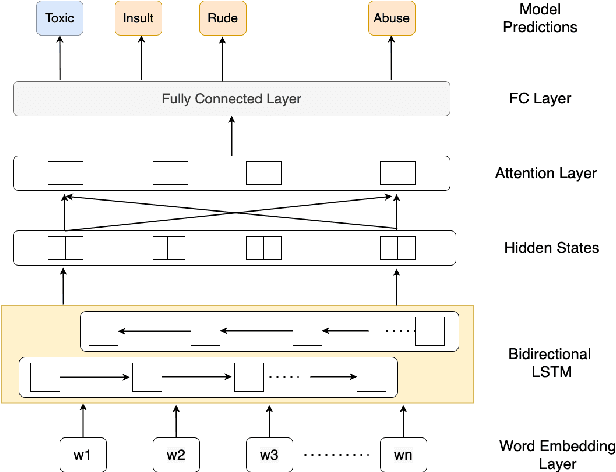
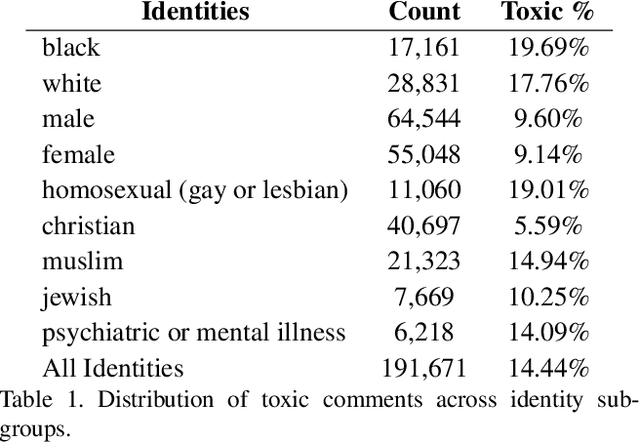
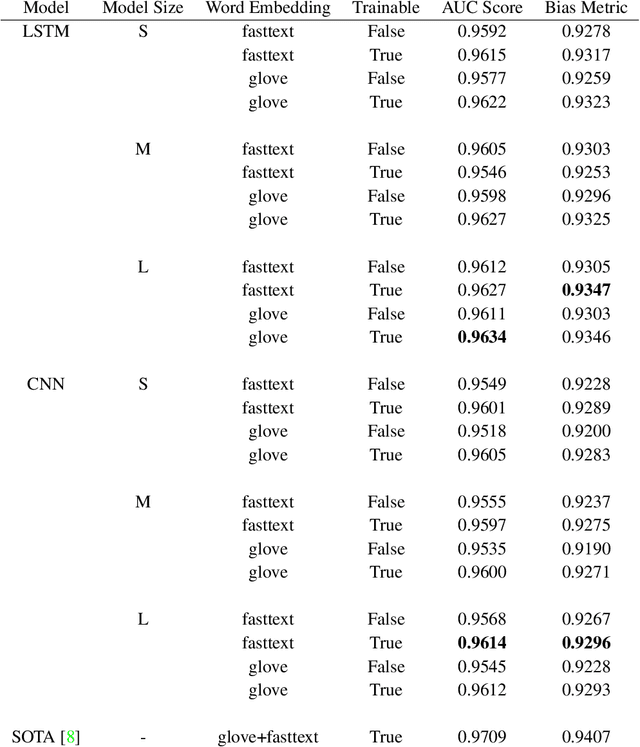
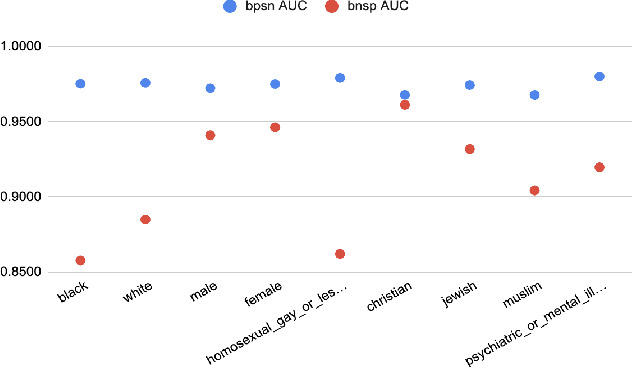
Abstract:With surge in online platforms, there has been an upsurge in the user engagement on these platforms via comments and reactions. A large portion of such textual comments are abusive, rude and offensive to the audience. With machine learning systems in-place to check such comments coming onto platform, biases present in the training data gets passed onto the classifier leading to discrimination against a set of classes, religion and gender. In this work, we evaluate different classifiers and feature to estimate the bias in these classifiers along with their performance on downstream task of toxicity classification. Results show that improvement in performance of automatic toxic comment detection models is positively correlated to mitigating biases in these models. In our work, LSTM with attention mechanism proved to be a better modelling strategy than a CNN model. Further analysis shows that fasttext embeddings is marginally preferable than glove embeddings on training models for toxicity comment detection. Deeper analysis reveals the findings that such automatic models are particularly biased to specific identity groups even though the model has a high AUC score. Finally, in effort to mitigate bias in toxicity detection models, a multi-task setup trained with auxiliary task of toxicity sub-types proved to be useful leading to upto 0.26% (6% relative) gain in AUC scores.
 Add to Chrome
Add to Chrome Add to Firefox
Add to Firefox Add to Edge
Add to Edge